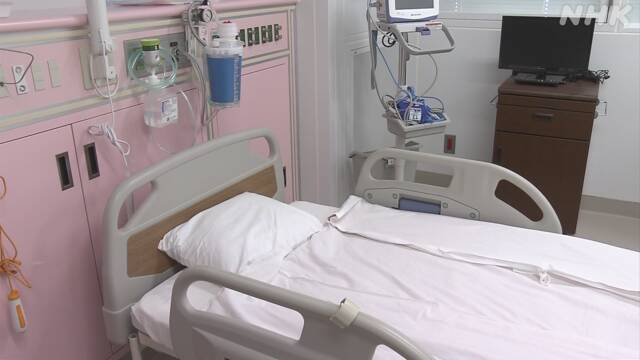The government subcommittee has "the degree of tightness of the bed," "the number of recuperators," "the positive rate of PCR tests," and "the number of newly infected people" as indicators for determining which of the four stages that indicate the infection status. "Comparison of the number of infected people in the last week and the previous week" and "Percentage of people whose infection route is unknown" are listed.
As of the 2nd of this month, the Cabinet Secretariat has summarized the infection status of the four prefectures that have declared a state of emergency and the six prefectures that have been declared until last month, but it falls under the most serious "stage 4". The value is gone.
Regarding the "tightness of beds", some local governments publish values different from those of the national government based on the "number of beds that can be immediately responded" that can be accepted immediately.
1 The tightness of the bed
First of all, the tightness of the bed.
The standard bed usage rate is 20% for "Stage 3" and 50% for "Stage 4".
The usage rate of the entire sickbed is 32% in Tokyo, 42% in Saitama, * 50% in Chiba, 29% in Kanagawa, 27% in Aichi, 19% in Gifu, 27% in Osaka, It is 29% in Hyogo prefecture, 18% in Kyoto prefecture, and 36% in Fukuoka prefecture.
Of these, 33% of beds for the severely ill are in Tokyo, 20% in Saitama, 16% in Chiba, 15% in Kanagawa, 25% in Aichi, 12% in Gifu, and 34 in Osaka. %, 34% in Hyogo prefecture, 12% in Kyoto prefecture, and 18% in Fukuoka prefecture.
* According to the Cabinet Secretariat, Chiba Prefecture is rounded to the nearest 49.7%.
2 Number of recuperators
Next, the number of people receiving medical treatment is 15 per 100,000 population, 15 for "Stage 3" and 25 for "Stage 4".
22 people in Tokyo, 17 people in Saitama prefecture, 24 people in Chiba prefecture, 11 people in Kanagawa prefecture, 8 people in Aichi prefecture, 7 people in Gifu prefecture, 12 people in Osaka prefecture, 7 people in Hyogo prefecture, Kyoto prefecture. There are 11 people in Fukuoka prefecture and 11 people in Fukuoka prefecture.
3 Test positive rate
This is the positive rate of PCR tests for the last week.
The standard value is 10% for both "Stage 3" and "Stage 4".
3.4% in Tokyo, 2.7% in Saitama, 5.1% in Chiba, 4.4% in Kanagawa, 2.3% in Aichi, 1.1% in Gifu, 1.4% in Osaka, 1.8% in Hyogo, Kyoto It is 1.1% in Fukuoka prefecture and 1.7% in Fukuoka prefecture.
4 Number of newly infected people
The standard number of newly infected people per 100,000 population is 15 for "Stage 3" and 25 for "Stage 4".
13 people in Tokyo, 9 people in Saitama prefecture, 14 people in Chiba prefecture, 8 people in Kanagawa prefecture, 4 people in Aichi prefecture, 2 people in Gifu prefecture, 5 people in Osaka prefecture, 3 people in Hyogo prefecture, Kyoto prefecture There are 1 person in Fukuoka prefecture and 4 people in Fukuoka prefecture.
5 Comparison of the number of newly infected people in the last week and the previous week
When comparing the number of infected people in the last week and the previous week, the standard value is 1 times for both "Stage 3" and "Stage 4".
0.83 in Tokyo, 0.73 in Saitama, 0.94 in Chiba, 0.94 in Kanagawa, 0.81 in Aichi, 0.69 in Gifu, 0.76 in Osaka, 0.74 in Hyogo, 0.41 in Kyoto, 0.52 in Fukuoka. It has become.
6 Percentage of people with unknown infection route
Finally, the percentage of people whose infection route is unknown.
The standard value is 50% for both "Stage 3" and "Stage 4".
36% in Tokyo, 31% in Saitama, 26% in Chiba, 31% in Kanagawa, 34% in Aichi, 16% in Gifu, 49% in Osaka, 43% in Hyogo, 43% in Kyoto. It was 28% in Fukuoka prefecture and 31% in Fukuoka prefecture.

